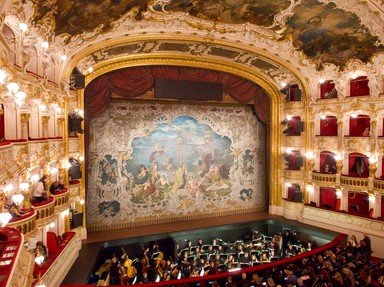Quiz Answer Key and Fun Facts
1. The earliest known theatral area was located where?
2. Which playwright did Hrosvitha model her plays after?
3. Although James I authorized the King's Players to play at Blackfriars in 1608, they were unable to open until December, 1609. Why?
4. Which of these is NOT a form of 'commedia dell'arte'?
5. Around 1660, scenic properties differed little in England, France and Italy. Which of these was NOT a standard unit at that time?
6. The Prussian monarch Frederick the Great supported what kind of lavish productions?
7. What was Lucia Vestris' most important work as?
8. Adolphe Montigny was famous for being the first to treat this aspect of theatre as an art form. What was this aspect?
9. All right, a question about Soviet Theatre. During WWII, what was Russian theatre devoted primarily to?
10. In Chinese opera, the 'wu-sheng' is a character noted for acrobatics. What kind of character is he?
Source: Author
ItalianEyes
This quiz was reviewed by FunTrivia editor
agony before going online.
Any errors found in FunTrivia content are routinely corrected through our feedback system.
